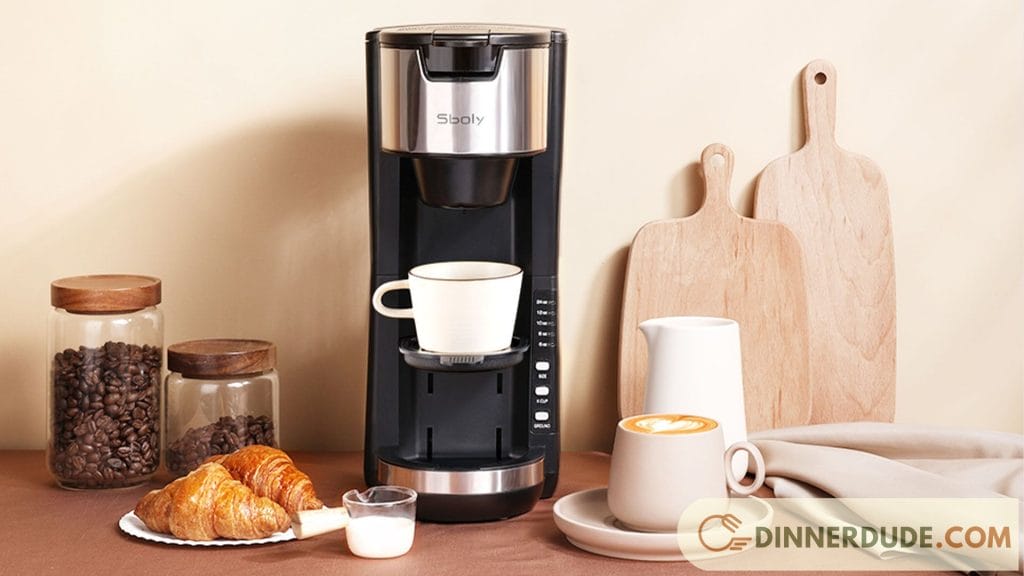For many people, coffee is an indispensable part of the morning routine. With so many different types of coffee makers on the market, from drip machines to French presses to high-end espresso makers, an important question arises: does the coffee maker really make a difference in the taste and quality of the final brew?
So, Does the coffee maker really make a difference? This essay, Dinnerdude will examine the impact of different coffee maker types on factors like flavor, convenience, and cost.
Does the coffee maker really make a difference?

How Brewing Methods Affect Flavor
The way coffee is brewed can significantly impact the flavor and aroma compounds that end up in the final drink. This is because different brewing methods extract different ratios of compounds from the coffee grounds. For example, drip coffee makers tend to extract more bitter oils while French presses extract more sediment and oils overall for a thicker, richer mouthfeel. Espresso is made by forcing hot water through very finely ground coffee at high pressure, resulting in a concentrated brew with a complex, bold flavor.
Optimizing Extraction
Each type of coffee maker has its own optimal methods for achieving the right level of extraction from the grounds. With drip machines, factors like the filter type, water temperature, and brewing time impact how much flavor is extracted. Espresso requires the right grind size, dose, tamping pressure, and water temperature to extract a balanced, non-bitter shot. The method used plays a key role in flavor.
Achieving Consistent Results
Consistency is also a factor in flavor. Manual methods like pour-over and French press require technique to achieve consistent results. Automated machines are generally better at delivering the same cup every time. High-end espresso machines with digital controls excel at repeatability.
Convenience and Ease of Use

Speed and Automation
Convenience is a major consideration that affects coffee maker choice. Drips machines and pod brewers are prized for their speed and automation – just add grounds, water, and press start. Models with programmable timers can have coffee ready when you wake up. French presses and pour-over require more hands-on time and technique. Espresso machines with automated grinding, dosing and tamping can streamline the process.
Cleanup and Maintenance
Cleanup and maintenance also factor into convenience. Drip machines with permanent filters just need a quick rinse. French presses and pour-over require more disassembly and cleaning. Espresso machines need cleaning of the brew head, portafilter, and steam wand. Pod brewers have no grounds cleanup but do produce plastic waste. Ease of use and maintenance should be considered.
Cost Analysis
Affordable vs Premium Models
There is a wide range of coffee maker costs, from $20 drip machines to $1000+ espresso setups. Higher cost machines may improve flavor but have diminishing returns. For example, a $200 drip machine may make better coffee than a $50 model but not be 4x better. Mid-range options around $100 offer solid performance for most users.
Longevity and Durability
Higher priced machines are often built for longevity with metal parts instead of plastic. Professional-grade espresso machines can last decades with proper maintenance. Cheap machines may break after a few years. So the upfront investment in a more expensive coffee maker can pay off over time.
What to Consider When You Choose a Coffee Maker

With so many alternatives to pick from, it may help to reduce the field by considering what is most essential to you so that you may prioritize those elements and locate the best coffee maker for you. Here are a few things to consider when narrowing down your selection of potential coffee makers.
Hands-Free Ease or a More Involved System?
Do you prefer a more hands-on technique of brewing your cup of coffee to the meditative ritual of preparing your daily coffee? Or do you have a habit of being rushed in the morning?
If this is the case, you should look for a coffee maker that allows you to simply press a button to start the coffee brewing process and continue about your daily routine.
Some coffee makers even let you set a timer to start the coffee brewing on its own, allowing you to set it and forget it. While none of these convenience variables have any effect on the flavor of your brewed coffee, they do change the experience of preparing it.
Is it better to drink coffee, espresso, or a hybrid?
Are you satisfied with a plain pot of drip coffee, or do you want a shot of espresso or a latte beverage to be completely satisfied with your coffee experience?
You’ll never be able to match the flavor of espresso and espresso-based beverages with a drip coffee brewer, so if you’re an espresso fan, owning your own espresso machine can save you a lot of money in the long run compared to buying your espresso drinks from a coffee shop.
There are hybrid systems available that feature multiple ways for brewing either coffee or espresso, which can save you a lot of counter space by providing an all-in-one alternative rather than requiring separate machines for coffee and espresso.
If the quality of your coffee is critical, you should probably have separate machines to provide you the most control. While pod or cup coffee makers do offer cappuccino or espresso options, these are more of novelty goods that would suffice in a rush than truly high-quality beverages that an espresso machine can generate.

The coffee maker has a clear impact on the taste, convenience, and cost of a daily cup of coffee. Manual brew methods allow more flavor control but require skill. Automated machines offer consistency and ease of use. Higher priced machines improve durability and flavor but have diminishing returns.
For most coffee drinkers, a good mid-range drip or espresso machine in the $100 range can deliver an excellent cup conveniently. But aficionados seeking the ultimate flavor may benefit from investing in more advanced equipment. The individual’s budget, priorities, and coffee tastes should drive the coffee maker selection.